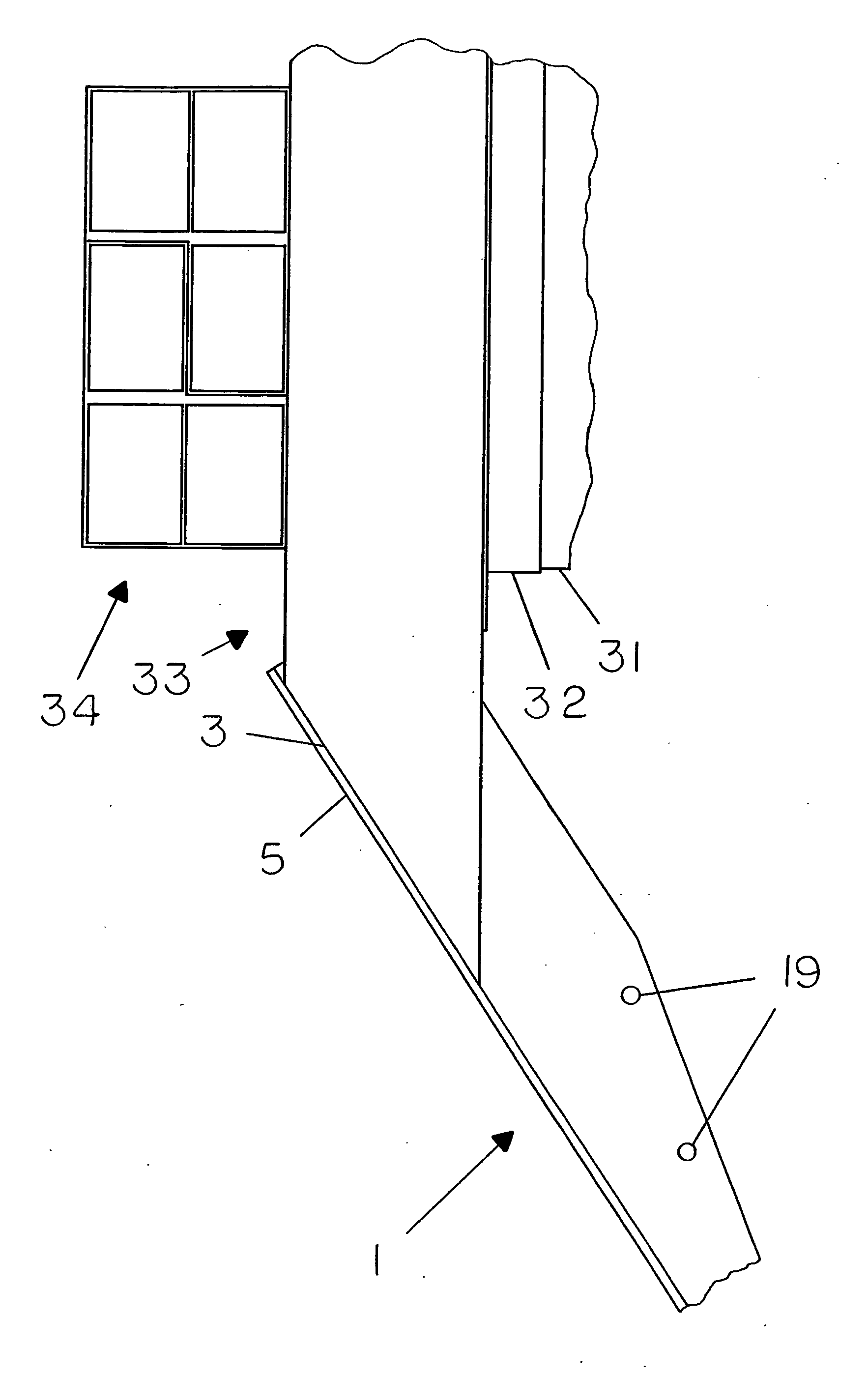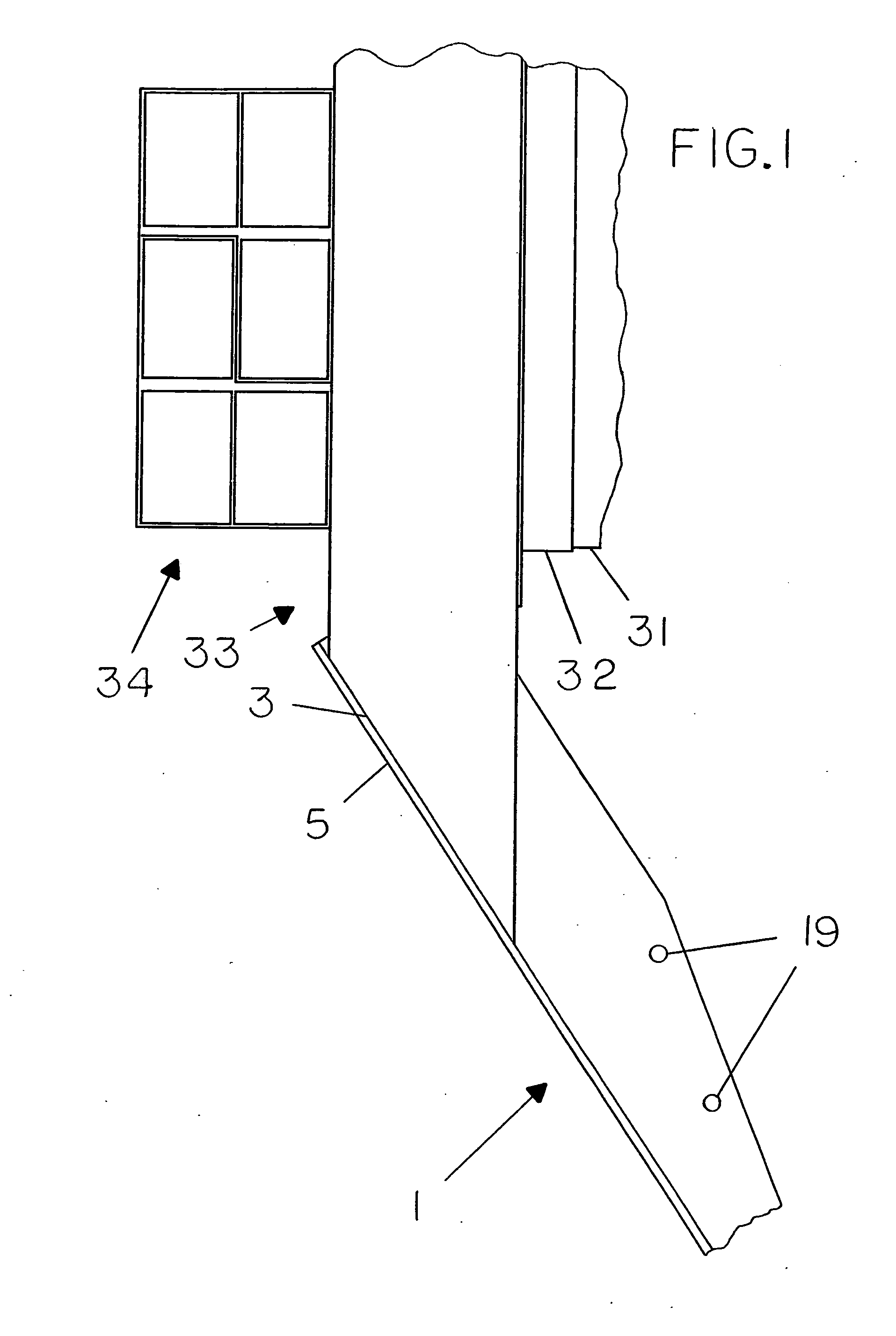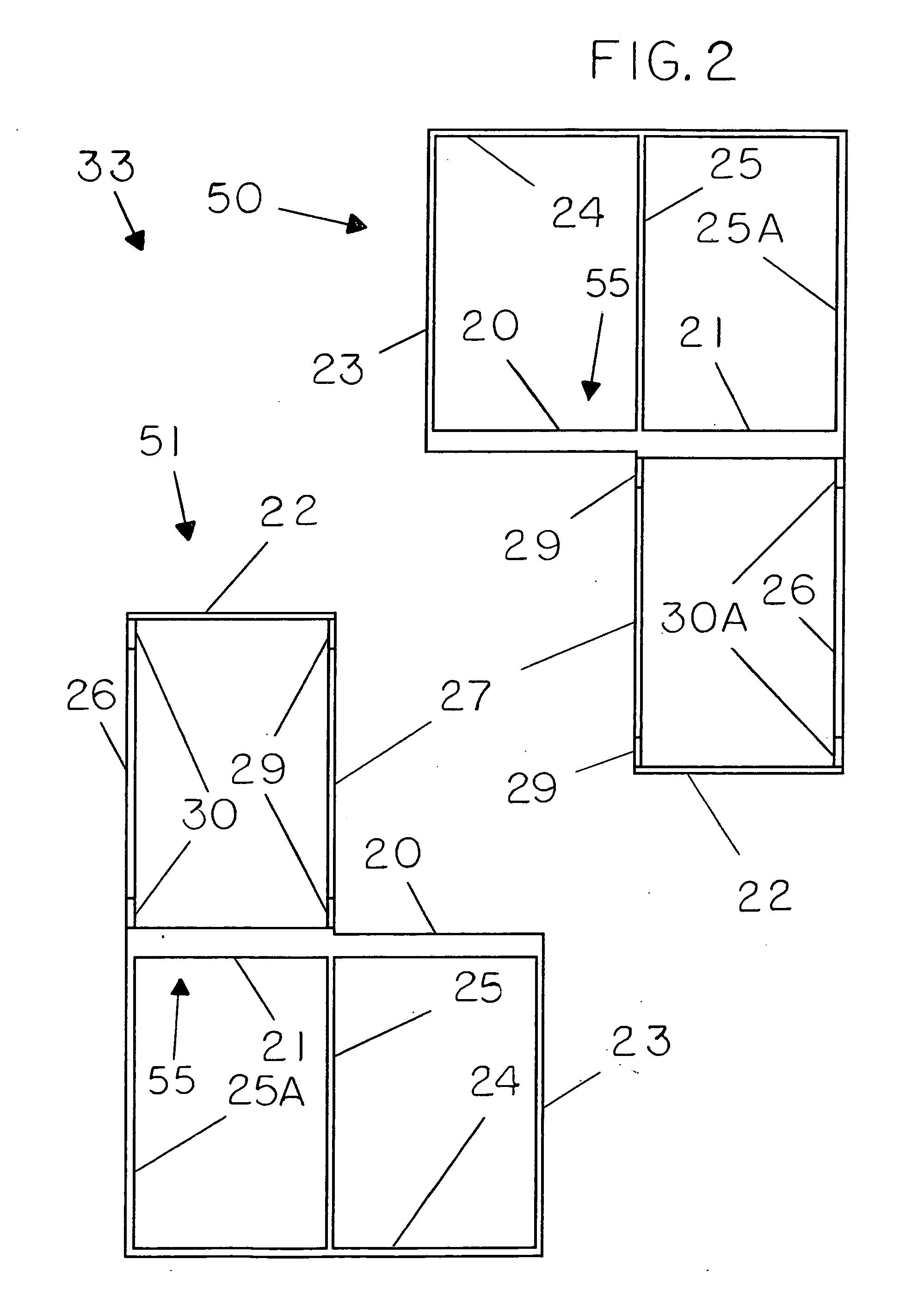Wind turbine blade and blade hub
a technology of wind turbine blades and blade hubs, which is applied in the direction of renewable energy generation, vessel construction, greenhouse gas reduction, etc., can solve the problems of exclusive (expensive) equipment and manufacturing techniques, and achieve the effect of reducing torque ripple driven vibration stress and less stressful blade deflection vibration frequency
- Summary
- Abstract
- Description
- Claims
- Application Information
AI Technical Summary
Benefits of technology
Problems solved by technology
Method used
Image
Examples
Embodiment Construction
[0032]FIG. 1 shows a side view of a four blade 75 horsepower VAWT rotor lower blade hub stack. Inside lower hub assembly 33 is shown in FIG. 1. Inside blade extrusion 1 is shown mounted to inside hub assembly 33 in FIG. 1. Inside hub assembly 33 is cut off for the hub end opposite blade extrusion 1. The side of the hollow cylindrical rotor tower 31 is shown mounted to inside hub 33 by 2 flange ring 32 in FIG. 1. Tower. 31 is bolted to one flange of ring 32. Hub 33 is bolted to the other flange of ring 32. The bolts for 2 flange ring 32 are not shown. Tower 31 and 2 flange ring 32 are shown cut off with a jagged line. The hollow end of outside lower rotor hub assembly 34 is shown attached to inside rotor hub assembly 33 in FIG. 1. Blade extrusion 1 tail edge 3 is shown in FIG. 1. Blade extrusion 1 outside peak curve line 5 is shown in FIG. 1. Blade extrusion 1 vibration tuning holes 19 are shown in FIG. 1. The center of the length of rotor tower 31 is off the right edge of FIG. 1.
[00...
PUM
 Login to View More
Login to View More Abstract
Description
Claims
Application Information
 Login to View More
Login to View More - R&D
- Intellectual Property
- Life Sciences
- Materials
- Tech Scout
- Unparalleled Data Quality
- Higher Quality Content
- 60% Fewer Hallucinations
Browse by: Latest US Patents, China's latest patents, Technical Efficacy Thesaurus, Application Domain, Technology Topic, Popular Technical Reports.
© 2025 PatSnap. All rights reserved.Legal|Privacy policy|Modern Slavery Act Transparency Statement|Sitemap|About US| Contact US: help@patsnap.com



